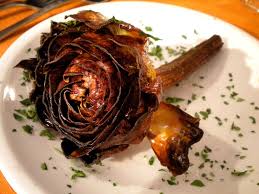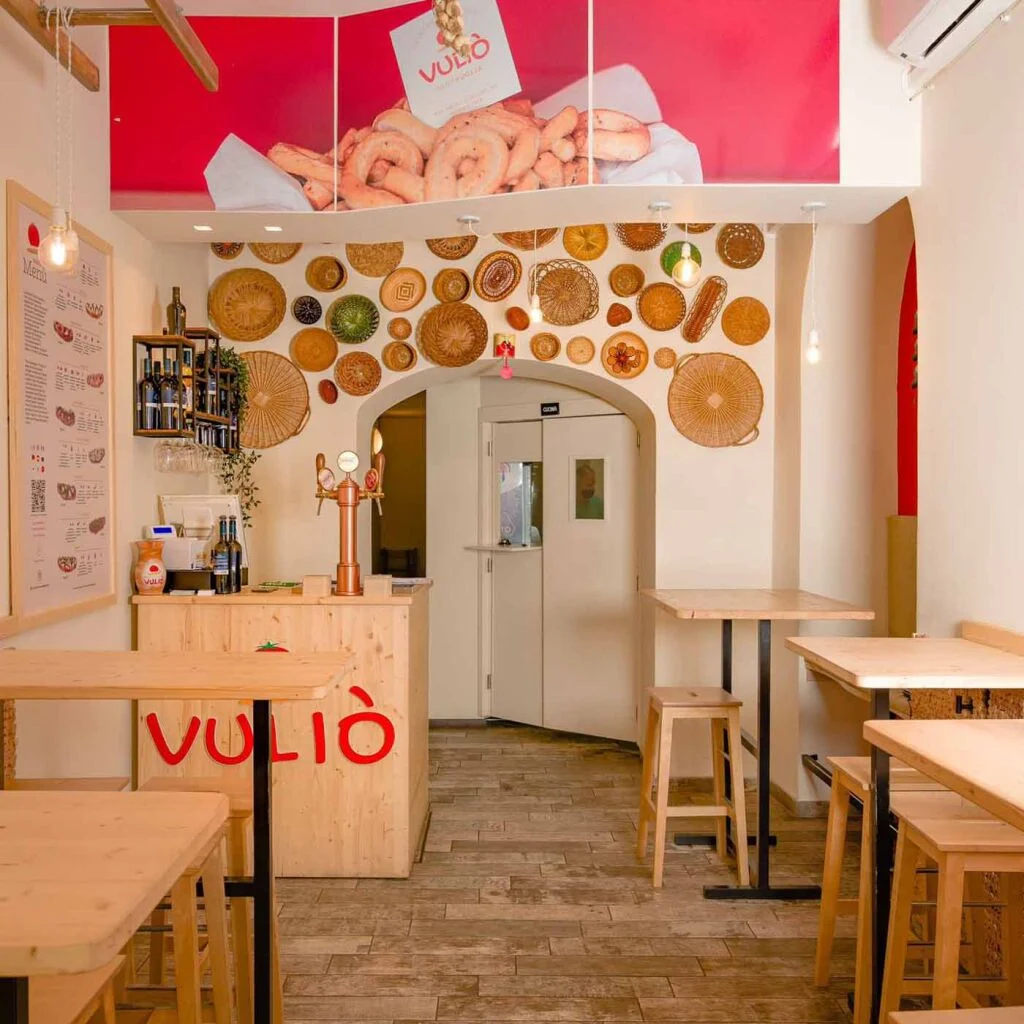You can’t truly get a feel for a city’s culture without trying the local cuisine, and in the Eternal City, food is a way of life. I may be speaking from a foodie’s perspective, but knowing what to eat in Rome is just as important as checking the Colosseum, Pantheon, and Trevi Fountain off your bucket list!
Ask anyone close to me, and they’ll tell you about my love for Roman dishes; you’ll see it for yourself whenever you join my Rome food tours. I’ve been determined to showcase this magical city’s diverse and undeniably delicious cuisine to those who share my passion for quality fare.
With this guide, I’ll give you the low down on what to eat in Rome and where to uncover the best spots for an authentic dining experience.
Carbonara

Carbonara is arguably the most quintessentially Roman dish. Creamy, sharp, and smokey, this dish consists of spaghetti fused with egg yolk, guanciale, pecorino, and black pepper. Aside from pizza, carbonara is probably the most recognizable Italian food.
This beloved dish has rather unusual origins. During the 1940s, it’s believed that American troops who’d arrived in Italy wanted to add some flavor to their spaghetti and did so using a blend of eggs and bacon. Not long after, carbonara spread across the country.
Where to Find It: Good carbonaras can be found all over Rome, but the trattorias in Trastevere are tough to beat.
Cacio e Pepe

Simple but so good, cacio e pepe is made from just a handful of components: pecorino, pepper, and spaghetti or tonnarelli. It’s hearty and indulgent, highlighting how Rome’s cuisine is all about utilizing basic but high-quality ingredients.
During Ancient Rome, locals would use sheep’s milk to jazz up their pasta. As pasta became something both wealthy and poorer Romans could enjoy, cacio e pepe soon developed into a staple in the city.
Where to Find It: I’ve had some of the best cacio e pepe in some of Esquilino’s trattorias, though you’ll be spoiled for choice in most areas of the city.
Carciofi Alla Giudia

Photo credit: Carciofi Alla Giudia
Deep-fried artichokes might not sound like a typical Roman delicacy, but carciofi alla giudia is among the city’s most unique, tastiest creations. Naturally, artichokes are the focus of the dish, and they’re paired with kosher salt, olive oil, and a dash of lemon.
Between the 1500s and 1800s, Rome’s Jewish community was forced to live within the confines of a walled section of the city. The artichokes growing nearby became a food source for the Jews, and they began frying them in oil to ensure they adhered to kosher guidelines.
Where to Find It: Considering this dish traces its origins to Rome’s Jewish Ghetto, the ristorantes, and trattorias in this area have some of the best carciofi alla giudia in town. However, you’ll need to visit during the right season, which runs from February to early May.
Pizza al Taglio

Pizza al Taglio, also known as pizza by the slice, is a Roman style of pizza generally sold in square or rectangular slices and priced according to weight. Toppings can range from classics like margherita to more unusual options like fig and potato.
This type of pizza came about in the 1950s when Roman bakers found it easier to cook pizza in rectangular trays to fit into their ovens while opting for thicker, focaccia-like dough.
Where to Find It: Many of my favorite pizza al taglio spots are in the Monti neighborhood, and the pizzerias here are must-visits.
Suppli

Rome’s answer to Sicilian arancini, suppli is a street food you won’t want to skip. Suppli are deep-fried rice balls that are oblong in shape. Inside the outer layer of breadcrumbs is a mix of risotto rice, tomato sauce, and mozzarella.
Many believe that Napoleon’s French troops brought croquettes to Rome in the 1800s, and the locals put their own spin on these fried snacks. The name is said to be inspired by the French word for ‘surprise.’
Where to Find It: For authentic suppli, swing by the deli-style eateries in Trastevere.
Maritozzi

Honey and vanilla-imbued brioche bread packed with a helping of luxurious whipped cream; maritozzi is Rome’s signature sweet treat.
The addition of whipped cream came long after the invention of the original maritozzi. In Ancient Rome, women would whip up loaves of bread filled with dried fruits, raisins, and honey for their husbands, who worked long hours working in fields.
Where to Find It: Amble down to Esquilino and sample the mouthwatering maritozzi up for grabs in the area’s pastry shops.
Porchetta

Porchetta is deboned and roasted pork blended with rosemary and garlic. The fat is kept on, making the meat incredibly juicy and enhancing its deeply savory notes. More often than not, porchetta is served in a warm, crusty bread roll.
There tend to be some disputes about where porchetta came from, but many say it hails from Ariccia, a town south of Rome. Emperor Nero was thought to have fed it to his troops some 2,000 years ago!
Where to Find It: The general Centro Storico area has some fantastic paninotecas or sandwich shops, especially in Sant’Eustachio and Trevi.
Must-Try Restaurants for an Authentic Roman Experience
La Locanda del Tempio

Photo credit: La Locanda del Tempio
La Locanda del Tempio is one of my favorite eateries in the Trevi area, offering an extensive menu of Roman delights.
Despite how busy this place gets, it never loses its wholesome, laid back vibe. It’s as picture-perfect as can be, with stone archways, maroon walls, endless wine bottles lining the shelves, and tables spilling onto the cobblestone streets.
The cacio e pepe here is exquisite, and although I’ve tried the varieties with truffle and pistachio, the traditional version is best. Each strand of pasta had a gentle chewiness to it, and the mix of decadent cheese and fiery black pepper tasted better with every bite.
La Locanda del Tempio – Via di Pietra, 85, 00186 Roma RM, Italy – Open every day from 11:00 am to 11:00 pm.
Nannarella
At this point, Nannarella in Trastevere could easily rank among the best restaurants in Rome. Though it’s become super popular, it hasn’t lost its touch in the slightest.
It’s a homely, understated osteria, and there are rarely any empty tables inside or outside. I’m more drawn to their indoor dining area, as the wooden paneling, vintage wall art, and old-fashioned tables make it feel cozy and inviting.
Their carciofi alla giudia is sensational, and it’s easy to see why it’s among their best-sellers. Each flower-shaped artichoke had a gorgeous golden crust. Once I broke through the crunchy exterior, I was met with tender, nutty flesh brightened up with zingy lemon and sweet garlic.
Nannarella – Piazza di S. Calisto, 7/a, 00153 Roma RM, Italy – Open every day from 11:00 am to 11:30 pm.
Ristorante Pancrazio dal 1922

Photo credit: Ristorante Pancrazio dal 1922
For over a century, Campo de’ Fiori’s Ristorante Pancrazio has been dishing out some of the most delectable Roman fare.
The brick and stone interior feels almost medieval, but on a sunny day, their buzzing outdoor area is the place to be. Nestled inside a lively square, the terrace is adorned with fairy lights and sleek tables and chairs.
I’m a huge fan of their carbonara, and I love that it comes with chunky rigatoni. As much as I enjoy the grassy pecorino and rich egg yolk, the flavors of the fatty, salty guanciale stole the show for me.
Ristorante Pancrazio dal 1922 – Piazza del Biscione, 92, 00186 Roma RM, Italy – Open every day from 9:00 am to 12:00 am.
Rome Must-Do’s for Foodies: Beyond the Typical Tourist Spots
If you’re hoping to dive a little deeper into Rome’s culinary traditions and culture, make some room in your schedule for some of these foodie-focused activities.
Discover Local Treasures in Rome’s Food Markets

For a local experience that’s both culinary and cultural, your best bet is to hit some of the food markets! Rome has a bunch of buzzing marketplaces where you can sample street food or pick up fresh produce, including Mercato Centrale and Mercato di Testaccio.
Take a Pasta-Making Class

Those of you who fancy trying your hand at cooking some Italian specialties should try out a pasta-making class during your visit. In addition to learning how to craft the perfect pasta, you’ll also dive into the importance of finding quality ingredients and specific preparation techniques.
Create Complementary Combinations With a Wine-Tasting and Food-Pairing Experience

No meal is complete without a well-matched glass of vino, and you can learn the art of wine pairings right in the heart of Rome. As you discover the ropes of being a sommelier, you’ll enjoy plenty of fine wines and tasty fare as part of your studies!
Conclusion
Few cities boast a gastronomic scene that could rival Rome’s. No matter where you find yourself, there’s a good chance exceptional food is no more than a few minutes away. Nevertheless, knowing what to eat in Rome allows you to prioritize the must-try foods rather than those not specific to the city.
Sources
La Locanda del Tempio. (n.d.). La Locanda del Tempio – Via di Pietra, 85, 00186 Roma RM, Italy. Retrieved from https://www.tripadvisor.com/Restaurant_Review-g187791-d1897524-Reviews-La_Locanda_Del_Tempio-Rome_Lazio.html
Nannarella. (n.d.). Nannarella – Piazza di S. Calisto, 7/a, 00153 Roma RM, Italy. Retrieved from https://nannarellaroma.it/en/home-english/
Ristorante Pancrazio dal 1922. (n.d.). Ristorante Pancrazio dal 1922 – Piazza del Biscione, 92, 00186 Roma RM, Italy. Retrieved from https://www.ristorantepancrazio.it/en/restaurant-campo-de-fiori-rome/












